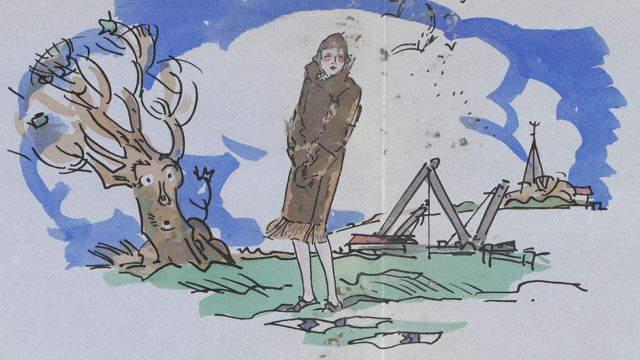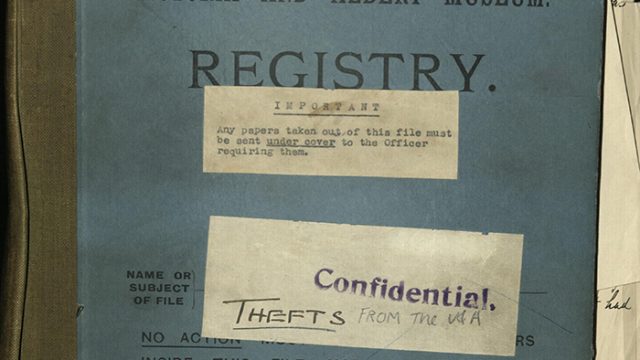Last September Dr Earle Havens from Johns Hopkins University approached me about the V&A Archive hosting a group of eight undergraduate students as part of their Museums and Society Programme visit to London. The V&A Archive is visited regularly by individual researchers from overseas, who study our unique and irreplaceable documents for a range of academic and leisure purposes: book projects or academic dissertations, family history research (perhaps an ancestor was an employee of Heal and Son, the bedding and furniture manufacturer and retailer, or the silversmith, Edward Barnard & Sons Ltd, whose archives we hold, or donated an object to the V&A), or inspiration for creative design projects. Consequently, the opportunity to contribute to a formal academic programme such as this was an exciting addition to our international outreach.
The students visited London from 7-18 January 2013 and spent their mornings on behind-the-scenes tours of London cultural institutes. In the afternoons they worked on research assignments in the V&A Archive in Blythe House, using our records to reconstruct the history of ownership of the objects, to discover the reasons for their acquisition, to assess how the public reacted to their display, and to consider their relevance to a present day audience.
Before they arrived, the students had selected objects from a list of fifteen and undertaken some preliminary research online using the V&A’s Search the Collections database. Then, when they visited the V&A Archive for the first time, we gave them an introduction into the role of a Museum archive, the different types of documents they might encounter, and how they could be interpreted and used. We also talked about the effects that significant historical events (e.g. World War II) and political/social movements (e.g. the Suffragettes) had on shaping cultural organisations and their activities. Did you know in the run up to World War II, many of the V&A’s objects were evacuated to a quarry in Wiltshire? Or that the Suffragettes’ threat to damage museum objects was one factor behind the V&A’s decision to abolish admission charges in 1914?
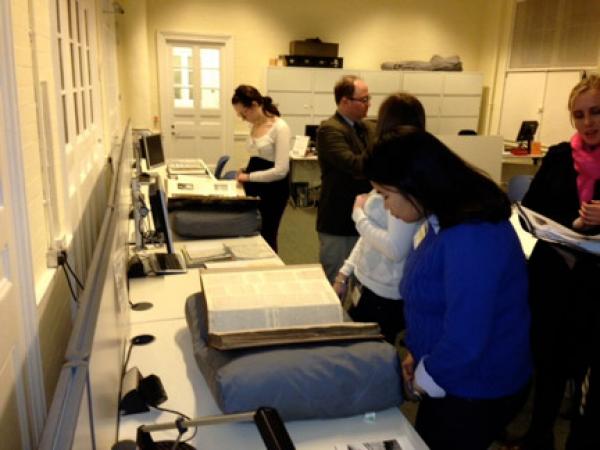
Johns Hopkins University students and their instructor, Earle Havens, examining and discussing a selection of the V&A’s institutional records in the Blythe House Reading Room. © Victoria and Albert Museum, London
The students chose to research objects such as the Ardabil carpet , art nouveau furniture, an Italian cassone, the Spanish altarpiece ‘St George’, Auguste Rodin sculptures, and a panelled room from the ‘Old Palace’ at Bromley-by-Bow.
The records associated with these objects are extremely varied and offer some fascinating insights into the acquisition process. For example, the correspondence file for the London dealer Vincent Robinson & Co. Ltd (archive ref. MA/1/R1314/2) holds papers documenting the purchase of the Ardabil carpet, on display in the Jameel Gallery of Islamic Art.
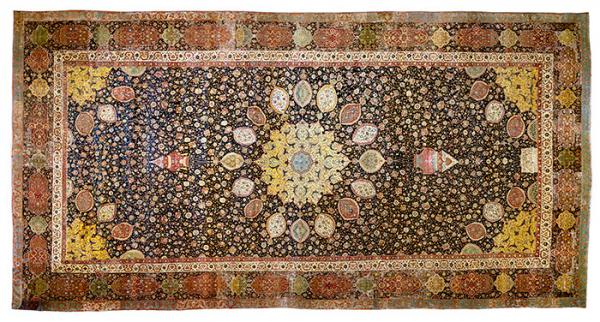
Medallion carpet (the ‘Ardabil Carpet’), Iran, early 16th century, Museum no. 272-1893. © Victoria and Albert Museum, London
Among the papers is this letter written by the artist, designer and writer, William Morris (1834 – 96), who was retained by the V&A as one of its ‘art referees’ (or independent consultants). We learn that Morris thought it would be ‘a crime to let it go’ and that he even stumped up £20 of his own money to contribute to the £1,750 price that Robinson was asking for the carpet.
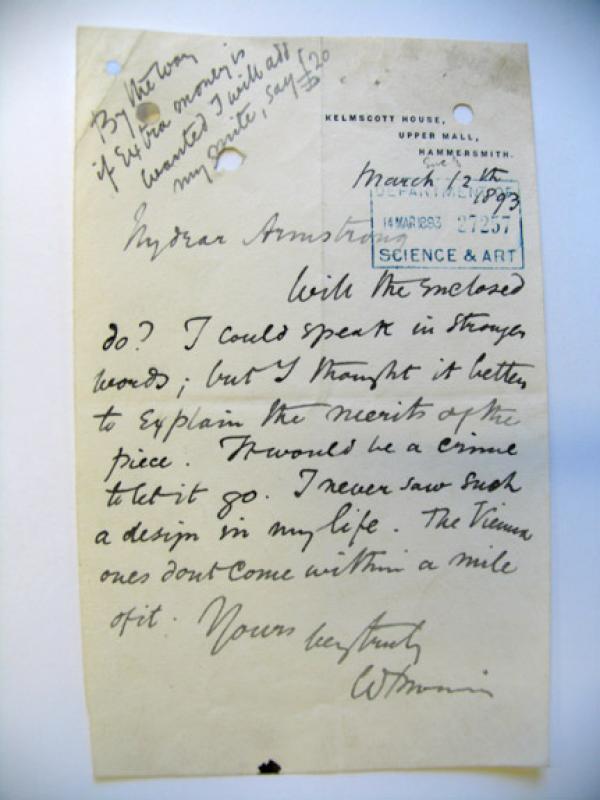
V&A Archive, MA/1/1314/2, nominal file: Vincent Robinson & Co Ltd, letter from William Morris to Thomas Armstrong, 12 March 1893. © Victoria and Albert Museum, London
Following delivery of the carpet, details such as a full description, source of acquisition, price, and museum number were entered into the Central Inventory register for 1893. Transcripts of the reports of William Morris and another art referee, Sir Frederic Leighton, were also pasted into the register, along with a photograph showing a detail of the carpet:
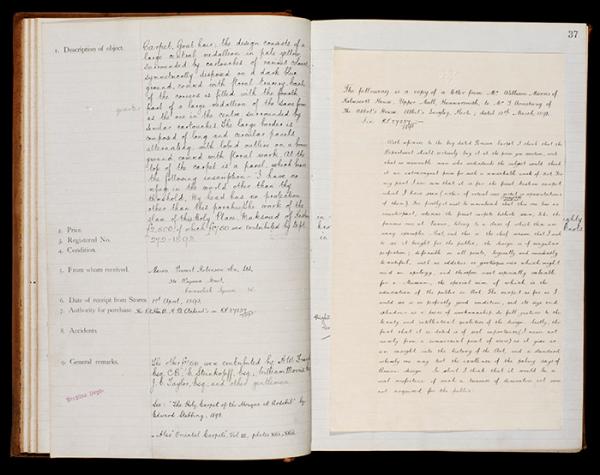
V&A Archive, MA/30/165, Museum Register No. 131. Science & Art Department. 236 to 508. © Victoria and Albert Museum, London
Our photographic guardbooks, of which we hold over 900, include this black and white photograph of the carpet, taken at the time the carpet was accessioned:
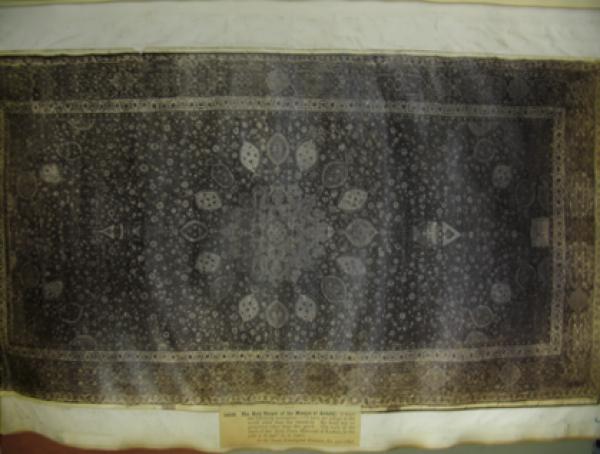
V&A Archive, MA/32/46, negative 14102. © Victoria and Albert Museum, London
Of her experience of using the V&A Archive, Alli Greco said: “Conducting research at the V&A Archive has been both an exciting opportunity and a seamless process … the Archive’s extensive collection of original documents have been invaluable resources in helping me fit together the pieces of a nearly 200-year-old puzzle! I could not have asked for a more rewarding experience”.
Joel Mantilla said: “the staff at the Blythe House Archives made my first archival experience an unforgettable one … they have helped me see historical scholarly work in a different light”.
The students were awarded A grades for their research papers. Congratulations!

